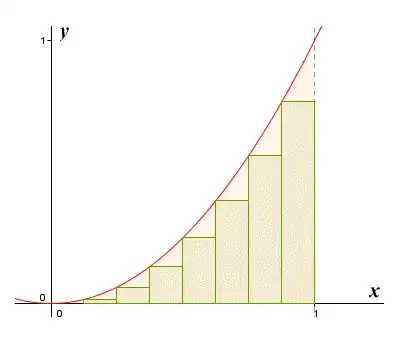$S=\displaystyle \lim\limits_{n \rightarrow \infty}(1/n^6+32/n^6+...1/n)$ and $T=\displaystyle \lim\limits_{n\rightarrow \infty}(1/n^6+32/n^6+...(n-1)^5/n^6)$, then prove that $S\rightarrow \frac{1}{6}^+,$ $T\rightarrow \frac{1}{6}^-$ and $S+T>1/3 $
A definite integral shows the area under the curve for any function between two points which are called limits. We can integrate a function by dividing the area under the graph to small rectangles, decreasing the breadth of the rectangles to an infintesimally small quantity $dx$ and assuming there are an infinite number of rectangles.
$T=\int_0^1 x^5=1/6$ approximately. I think it will be a little less than $1/6$ because the last term is $(n-1)^5$. I can't understand why $S$ will be larger than $1/6$.
When we integrate using the rule $\int x^n=x^{n+1}/(n+1)+c$ , are we calculating the exact area under the graph or are we excluding the infinitesimally small areas left after filling the graph with an infinite number of rectangles. I.e are the areas shaded light pink in the graph accounted for or not.
Please help me with the question :)
